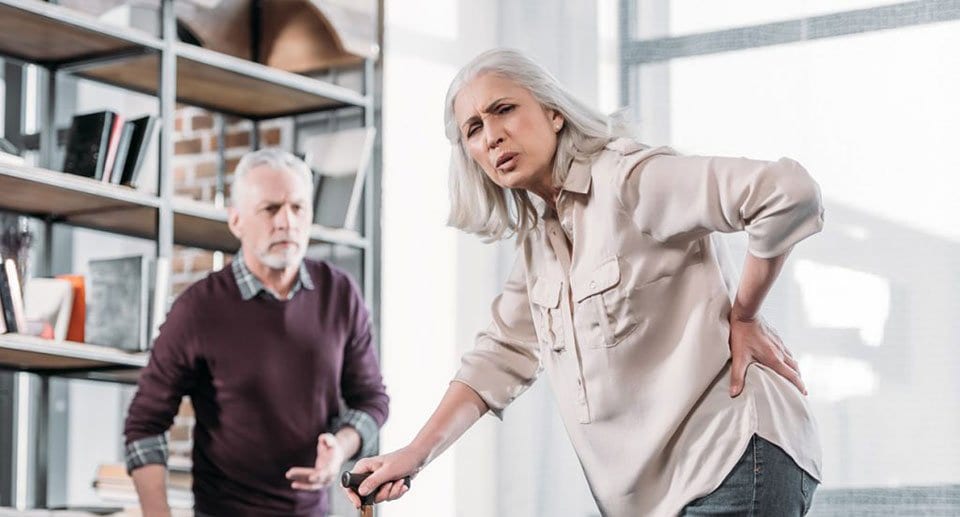When bone fractures lead to curving of the spine
There’s osteoporosis. And then there’s kyphosis.
While osteoporosis can be prevented or treated early, by the time someone is diagnosed with kyphosis, much of the damage truly has been done.
Kyphosis is the condition you see when an elderly person is hunched over, almost staring at the ground as he or she walks.
“It’s the culmination of multiple fractures that lead to the curvature of the spine,” explained Gordon Nakata, MD, a neurosurgeon with Cape Cod Healthcare. “The person’s bones are actually collapsing. Bone can push back into spinal cord and in some cases even lead to paralysis.”
The condition is not only disabling, it also creates a predisposition for pneumonia because the ribs cannot expand, he noted. “The lungs have no place to go.”
Kyphosis can occur as a result of a single spinal fracture, but typically, it is caused by multiple, undiagnosed fractures over time, said Dr. Nakata.
“The degree that you can correct it is limited. The sooner it can be treated, the better the outcome,” he said.
The condition can develop due to poor posture, or it can be congenital. But the primary causes are arthritis, spinal trauma or most commonly osteoporosis.
Variety of Treatments
Many people ignore early signs that the condition may be developing, said Dr. Nakata. They can be suffering back pain or stiffness, exaggerated rounding of the shoulders, differences in shoulder height and a forward bending of the head compared with the rest of the body.
But, there are measures people can take to address the condition. Most cases can be diagnosed during a physical exam, with confirmation via X-rays, an MRI or CT scan. Your physician may also measure how well you breathe.
There are a variety of treatments for kyphosis, depending on the severity. Initially, it may be observation only. Your doctor may recommend watching to see if the curve progresses, or if there are changes in symptoms. This means you may have more follow-up appointments.
If it is more progressed, physical therapy may be valuable. This may include strength work, stretching and conditioning. You may also be taught how to maintain a correct posture. You may also be instructed to sleep on a firm mattress.
There are medications – nonsteroidal anti-inflammatory drugs – that may be prescribed. A back brace can be used as well – maybe more to reduce pain than to correct the condition.
In many cases, the best strategy is kyphoplasty surgery, explained Dr. Nakata.
A small incision is made in the back and a tiny drill creates an opening in the bone. Then, a special balloon is passed through and inflated to open space and correct the deformity. After the balloon is removed, acrylic cement is injected into the cavity to maintain the correction.
The operation takes between one and two hours and a patient can be discharged from the hospital within hours without any complications. There will be minimal pain medications, mainly to prevent muscle spasms.
Because most people requiring or preferring surgery are in their 70s and 80s, there always is a risk, but Dr. Nakata, who has performed about 1,000 procedures, said it is quite low.
Suzanne, a patient of his, entered Cape Cod Hospital for kyphoplasty surgery at 9 a.m. and was on her way home shortly after noon.
“I noticed more agility almost immediately and no pain.” she said. “I actually drove 250 miles to a wedding right after the surgery. The only thing I had to do was put a pillow behind me while driving.”
